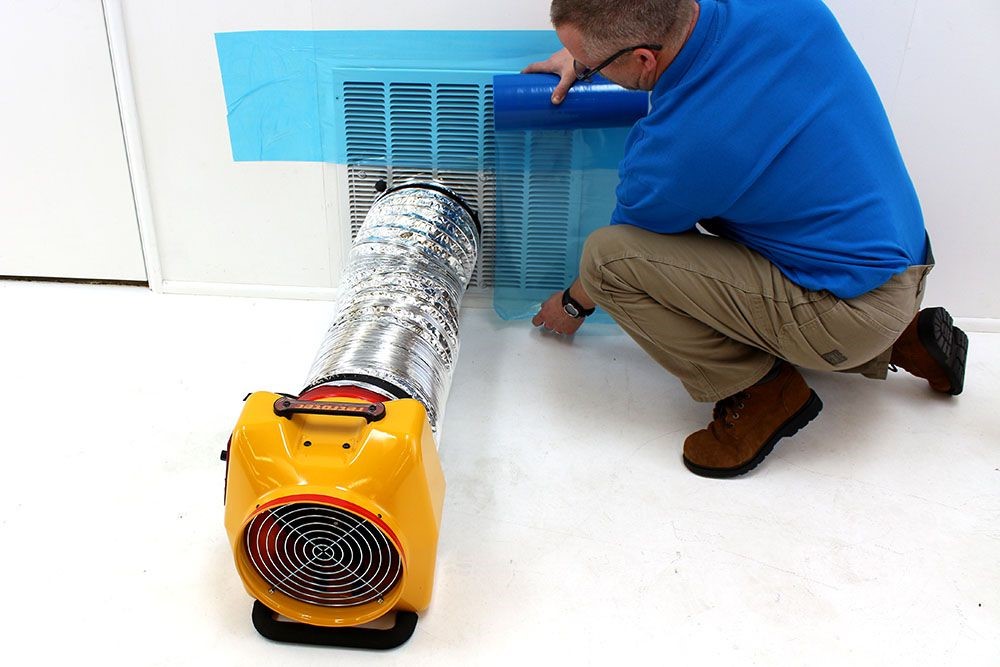Did you know that the average South Florida home leaks around 30% of its conditioned air due to air duct leakage? Furthermore, a home’s insulation can also fall well below its “R” rating due to improper installation. Talk about throwing money out the window!
A comprehensive Blower Door Test, Air Duct Leakage Test and Comprehensive Visual Inspection will yield a valuable HERS Rating, while identifying system vulnerabilities. By fixing the issues that the HERS Rating uncovers, you can save thousands of dollars in wasted energy costs while lowering your impact on the environment, and you may even qualify for valuable tax credits, too!
What is Air Duct Leakage?
Loose duct connections or poor sealing results in air loss and air quality issues. These can be repaired by identifying the leaks during an air duct leakage test, and subsequently repairing the vulnerabilities.
In addition, poorly insulated ducts can contribute to energy loss and increased condensation, leading to mold growth. Air duct Return leaks can draw in polluted air from the attic or crawl space and cause condensation, or lead to dangerous mold growth.
Pinched, crushed or broken duct work, as well as clogged air filters, are also common problems leading to HVAC inefficiency. When possible, technicians will improve the duct system by using less turns and configurations to reduce air flow friction.
Most noticeably, supply leaks can depressurize areas and cause back-drifting. Imbalanced air supply throughout the dwelling leads to temperature variability and overall discomfort. This is why some rooms become colder or warmer than others.
Air Duct Leakage Test
An air duct leakage performance test involves pressurizing the duct system with a calibrated fan and simultaneously measuring the air flow through the fan and its effect on the pressure within the duct system. You need less air from the fan to create a change in duct system pressure, the tighter the duct system. Testing can be set up to measure leaks connected to the outside or can be set up to measure leaks connected to the outside and the inside of the house.
Thermal Envelope Test
Your home’s “thermal envelope” refers to the air ventilation and leakage through its floors, walls, ceilings, windows and doors. Both natural and mechanical air pressure affects the rate of seepage throughout your home. A poorly structured thermal envelope can lead to costly energy use and consumption, especially in the hot and humid South Florida region.
And the “leakier” a home or dwelling is, the more energy it takes to condition it! A Blower Door Test is one of the most accredited ways of getting an accurate HERS Rating. The HERS Rating will show, from 1-100, how efficient the home is at ventilating. This data can provide valuable information to help improve and optimize the home’s ventilation system. Furthermore, optimizing the HVAC system and Thermal Envelope will Improve IAQ (Indoor Air Quality) by reducing the amount of airborne contaminants and by stabilizing the moisture level in the air. This reduces moisture in the air and prevents harmful mold growth!
Mechanical Ventilation
In some cases, a dwelling is not ventilating enough. If your home changes its air out less than 3x per hour, then it must be mechanically ventilated. South Florida homes that do not ventilate 3x hourly maintain a higher moisture level which can lead to mold growth and indoor air quality issues. Properly working HVAC systems clean and purify the air, hence the name “conditioner”! Exchanging air 3x hourly ensures that the home’s air is optimally safe and healthy to breathe. When a Blower Door Test shows too little ventilation, whole-house ventilation systems are installed to mechanically exchange indoor air with outdoor air to bring the dwelling into compliance.
Blue Sky Energy services homes and commercial spaces in the South Florida region. To schedule an Air Duct Leakage Test, call us at (PHONE NUMBER) or fill out this service request form (HERE). To learn more about Blower Door Testing and other services performed by Blue Sky Energy company in the South Florida region, visit our blog page:

